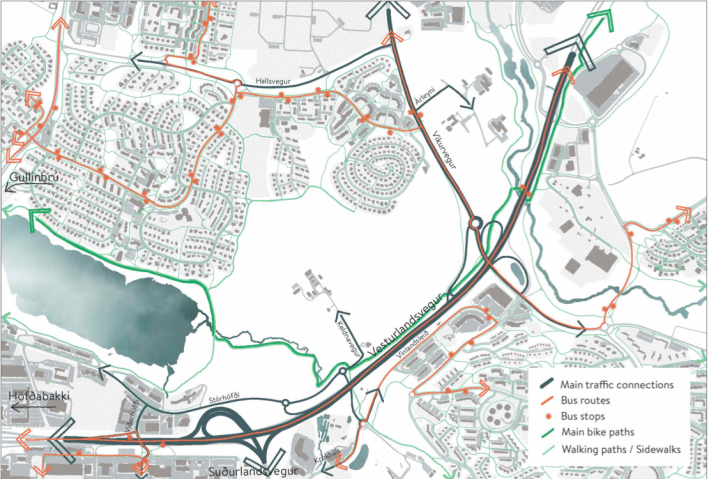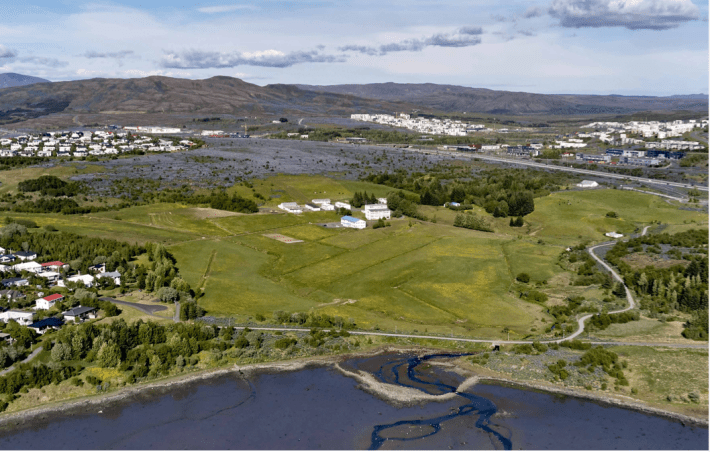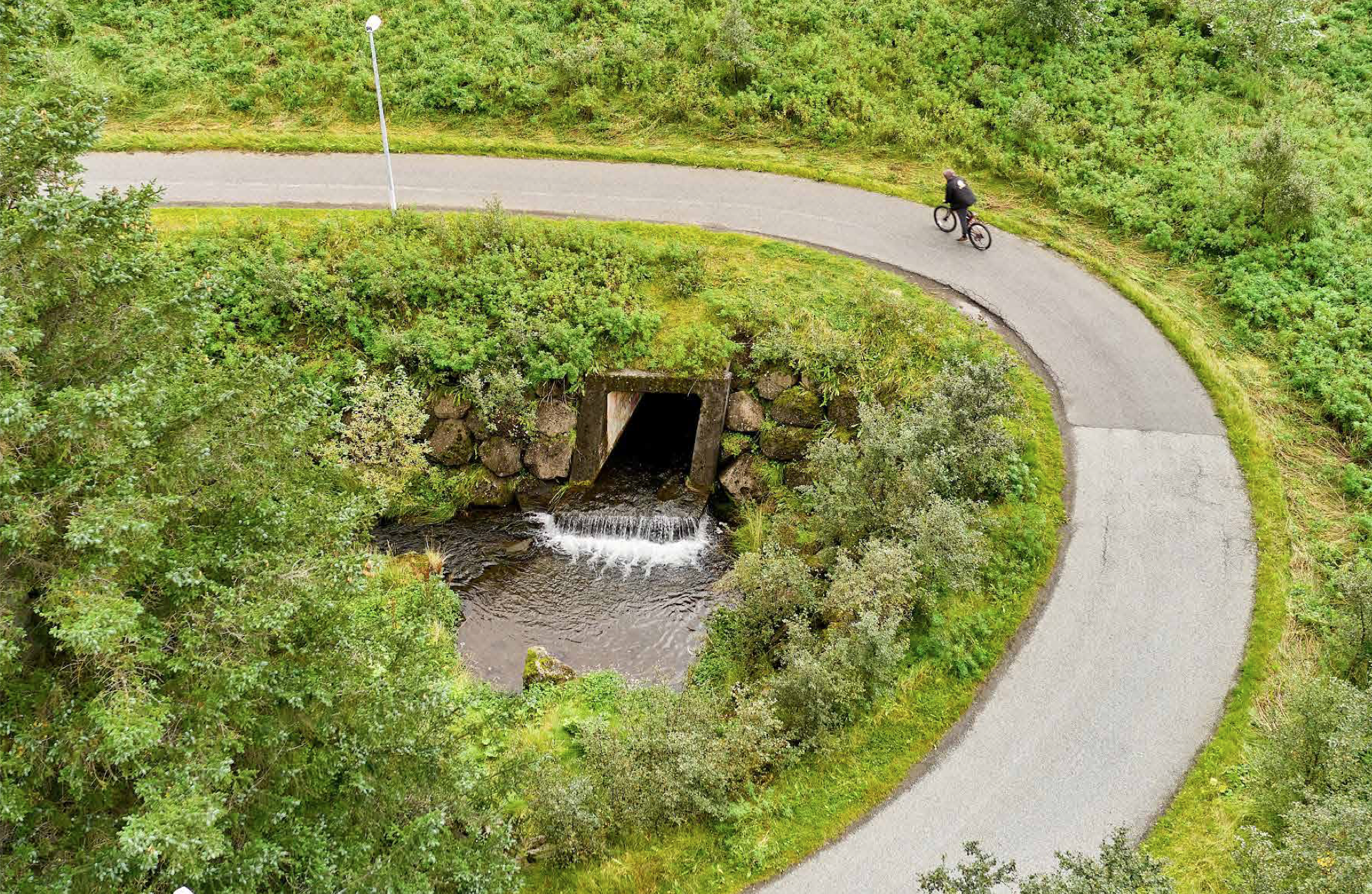An open competition to design a new urban quarter in Iceland will prioritize sustainable transportation in a region that's proactively transitioning out of car dependency — and it could serve as a model for how to fill similar holes in growing U.S. communities.
In January, officials in the city of Reykjavik announced a contest to create a "dense, mixed, diverse and carbon neutral new urban quarter" in the Keldur region, a still-undeveloped 288 acre (roughly a 0.45 square mile) stretch of the capital city about a 30-minute bike ride from the core downtown.
In the U.S., that missing puzzle piece might be considered the perfect opportunity for an expensive bedroom community with multiple cars in every garage. In the Keldur region, though, officials are recommending against excessive parking — and moreover, they've already promised to devote 100 percent of the profits from the development and sale of the land towards bringing frequent bus rapid transit service to residents. More broadly, the contest organizers called on entrants to "prioritize the eco-friendliest, most compact, and least cumbersome mode of transportation" in their designs; the finalists who do the best job will advance to the second round and receive 50,000 Euros each, and the final winner will get an additional 50,000.


"They are aspiring to create a true urban place, not just a better suburb," said Brent Toderian, a city planner and adviser to the City of Reykjavik who will serve on the jury for the competition. "They're aspiring to create a place that is not just a little less car dependent, but that's truly multimodal ... it's hard to compare it to [projects in] North American contexts, because frankly, it's more ambitious than North America usually is willing to be in these kinds of contexts."
Toderian emphasizes that while Iceland's goals for the Keldur contest are significant, the mere fact that they're hosting an open competition to create it is notable in and of itself. Unlike similar projects in American cities, which typically rely on a "request for proposals" process that only the most accomplished design professionals can realistically win, the Keldur contest will be open to anyone and judged anonymously by a team of local officials and expert advisors from around the world, like him.
Toderian says that open competition model is common in Europe, virtually unheard of in North America, and perhaps uniquely good at drawing out creative ideas from unexpected places – which may prove uniquely useful for a visionary, neighborhood-scale, sustainability-focused project like this one.
"You can't win on your reputation," he adds. "You can't win based on the projects that you've done in the past, or your media profile, or your big name. The theory is, simply, that the best idea wins."
Urban quarter design contests sometimes get a bad rap, Toderian explains, because of the perception that they invite outsiders to create a rigid master plan for a community they don't live in or understand well. He says the Reykjavik contest, though, is designed to be more flexible to local needs — "It's more about stimulating the creative juices than it is finding a specific design that you would...set in stone," he notes — while still allowing space for a bold vision that won't get mired down in toxic neighborhood politics.
"Someone [on Twitter] looked at the aerial photo of the [neighborhoods adjacent to the Keldur region] that I'd attached, and said, 'Well, what do the people in the cul-de-sac next door think?'" Toderian laughs. "I mean, come on: 'Grand urban ambition likely to be stymied by one person in the cul-de-sac next door'? If that's not a mini-statement of the problem of North American planning, I don't know what is. ... When they have relatively finite land to work with, other cities of the world are often much more bold than North American cities are. And if that means very urban is next to suburban, then that's what it means."

Moreover, Reykjavik is making it explicit that their 'grand ambition' for the Keldur region will be multimodal, human-scaled, and most critically, not dependent upon automobiles. The contest brief repeatedly emphasizes the importance of integrating the region into the city's ambitious Cycling plan — the city wants 10 percent of all trips to be taken on two wheels by 2025 — creating reliable pedestrian connections to surrounding areas, and making sure residents can meet their basic needs with a twenty minute walk or less.
"Its aspiration goes well beyond just 'transit-oriented development'," Toderian adds. "BRT has a prime role to play, but it's also about walkability and bikeability; it's about carbon neutrality; it's about green building design. Calling it a TOD would be too limiting, I think."

Toderian stresses that both the Keldur region specifically and the Land of Fire and Ice on the whole are highly unique places, and the project may not be perfectly comparable to many development initiatives in North American communities. For one, the Reykjavik metro is pretty small — just 240,000 people total — overwhelmingly white, and lacks some of the infrastructure commonly found in other national capitals, like rail lines. Moreover, few U.S. cities have a gap in their urban fabric anywhere near the size of the Keldur (though if they decide to tear down their aging urban highway infrastructure rather than rebuilding it, that could change soon.)
Still, Toderian hopes the Keldur project will inspire other city leaders around the world to be equally bold as they reimagine the overlooked corners of their landscape for a more sustainable and multimodal future — and to be bold about inviting new voices to the table, too.
"They want this neighborhood to set a new standard for urban development in the city," he adds. "They want it to [create] a new dense, mixed-use urban corridor that really knits the city together and plugs this missing hole. And they want to be an inspiration for other cities — even cities that are a lot bigger than themselves."
The submission deadline for queries regarding the first stage of the Keldur project is March 17, 2023. The deadline for phase one submissions is April 19. Learn more on how to apply here.






